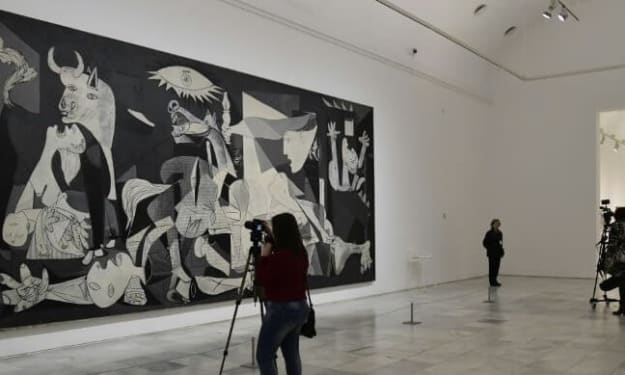
Imagine a long hallway lined with doors, each one concealing a chorus of music and sound. As you walk down the corridor, you clearly hear the class behind each door: the interactive songs of creative movement, pop radio hits of jazz, the clicks and clacks of tap, the drums and polyrhythms of modern, the emotional ballads of contemporary, the heavy bass of hip-hop, and the classical instrumentals of ballet.
If you open any of these doors, you will see artists in dancewear, staring at themselves in the mirror the ensure that they are performing correctly and beautifully. The studio is where dancers get to focus on training: to cultivate the technique of the muscles, the creativity of the mind, and the expression of the soul through movement.
Many dancers, both pre-professional and professional, spend the equivalent of a part-time or full-time job staring at themselves in the mirror, which can often have negative effects. Dancers are experts at correcting themselves, so it comes as no surprise that they often struggle with contentment and positive body image. Even dancers who fit the perceived typical physical structure of a dancer struggles with this, much less a dancer who does not fit the imposed physical mold, especially while wearing skin-tight bodysuits and tights.
As a young dancer, I found leotard shopping to be the most exciting part of buying dance supplies. However, being a young woman with an athletic muscular structure, short limbs, full bust measurement, and long torso, I also found it to be the most dreadful. I would walk into the store full of hope, grabbing every new style in my expected size until I couldn't fit any more in the fitting room. Then, one by one, each leotard would remind me of a part of my body that didn't comply with the dancewear sizing charts.
"I can't show that much cleavage!"
"I'll bounce too much."
"It's not supportive enough, I'd have to wear a sports bra."
"Oh! The bust looks nice...crap, the butt is baggy!"
"Boobs, check! Butt, check! UGH, the waist is too big."
"This makes my legs look so short!"
My issues with dancewear continued into costuming. I would often have administrators or designers order a size up for me (ignoring my measurements) out of fear I wouldn't be covered up in the bust, only to have the costume be too large everywhere, including the bust, and always too long. Yes, my family had to pay for the alterations. This was when I started to realize that even though my body performed BEAUTIFULLY technically, its differences from the typical body type made me feel like it was not okay to be different.
Let's get something clear, unintentionally or not, NO dancer should be made to feel like their perfectly functioning body is an inconvenience to themselves or anyone around them. Last time I checked, every human has the SAME muscles with the SAME functions. Let's give dancers the space to focus on their training and growth, not be unnecessarily burdened by the differences that make them unique, and may even one day become an integral part of their movement style and expression. They should especially not be disheartened by the dancewear industry's failure to serve their purpose in outfitting dancers. Dancewear should fit the dancer, not the other way around
So, as a dancer of 17 years, who has worn dancewear from dozens of companies and experienced a lack of inclusivity, my spirit has been convicted to dedicated time, effort, and as many resources as I can to see to it that no other dancer feels out of options when it comes to dancewear. It should be well structured, from the design of the pattern to the directional cut of the spandex, as well and fully functional and not requiring other bras or fashion tape to stay in place. Most of all, dancers of all body types should feel like their dancewear is a fashionable expression of who they are, not the only one that (kinda) fits.
Leahtards is a developing dancewear company that seeks to allow dancers a more specific sizing chart. Not just a range of measurements, resulting in a general Small or Medium, but a size that reflect their bust and hip sizes separately. We worry about the structure and function, so they can feel fashionable and focus on training or performance. I firmly believe that a dancer who loves what they're wearing is an unstoppable force, and simply feeling better about oneself can make even the most difficult technical feats more achievable.
I started designing Leahtards when I was 9 years old. These were just fun designs I thought I might make one day with all the things I learned while watching Project Runway. Little did I know that this dream would become a mission to provide a little less friction for the beautifully and uniquely-shaped dancer. I believe it is a small yet necessary step in preserving the mental health of dance artists, and I will not relent on this mission to assist my fellow dancers in celebrating their bodies in the art we love so much.






Comments
There are no comments for this story
Be the first to respond and start the conversation.